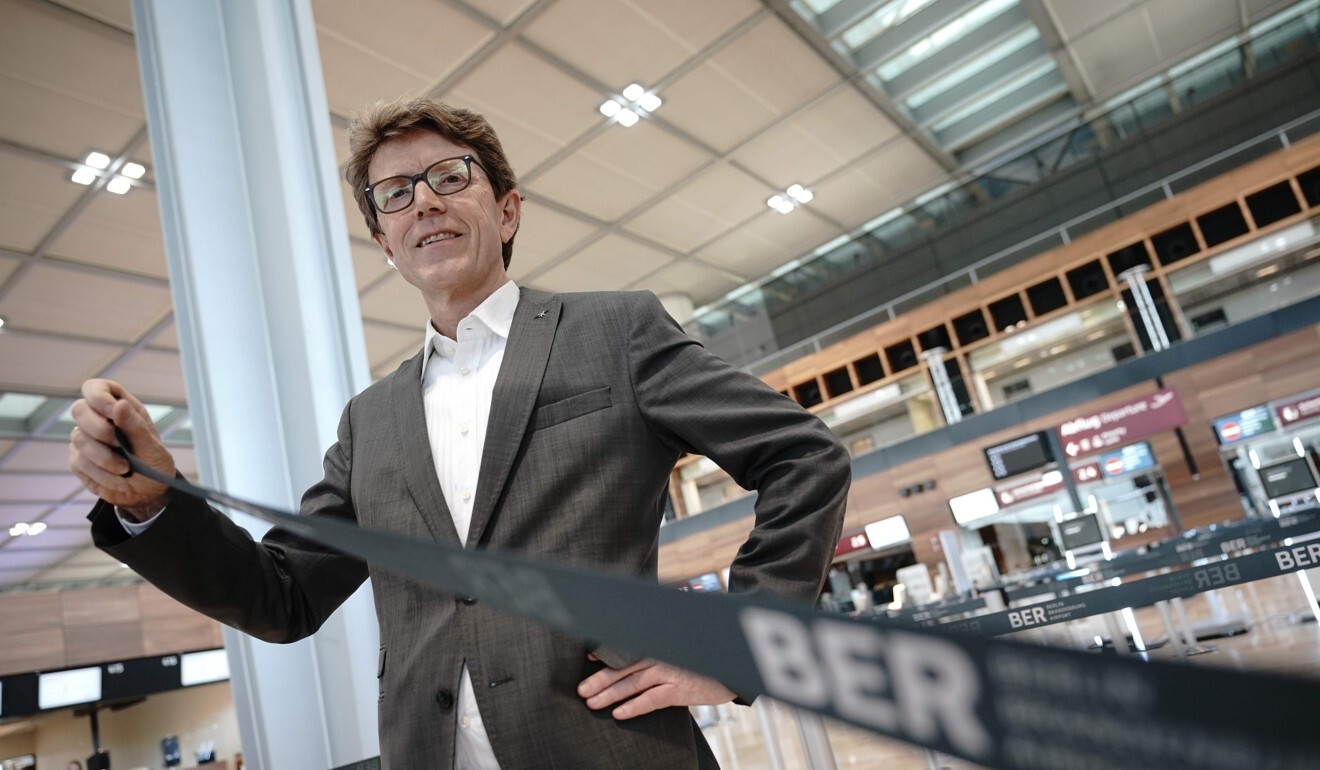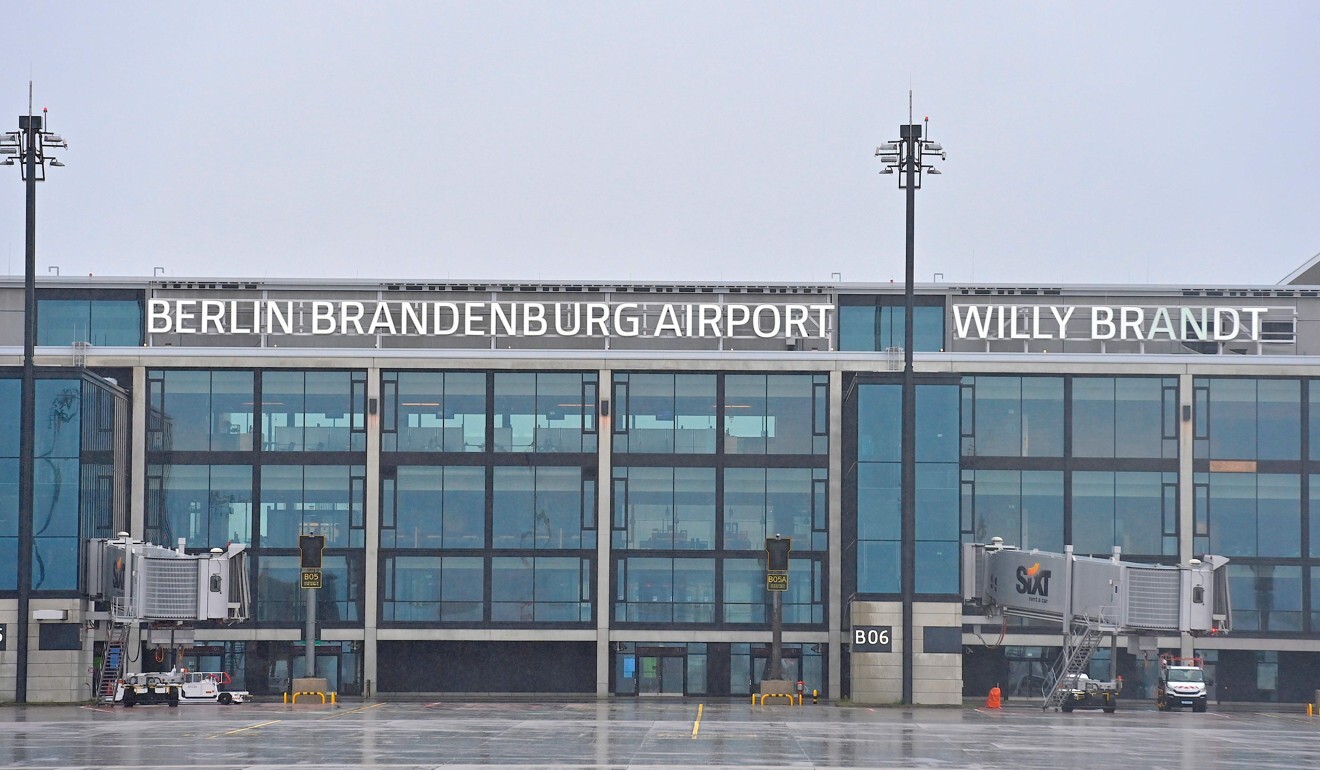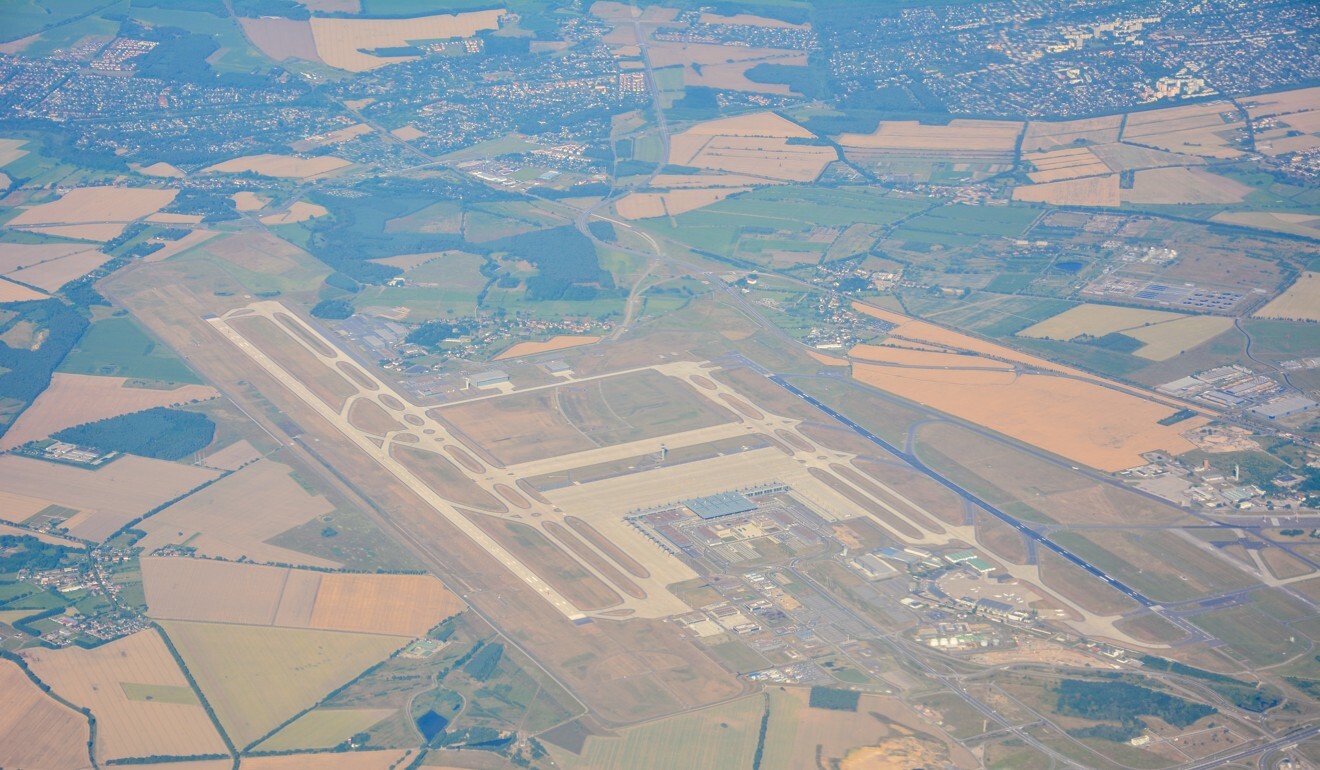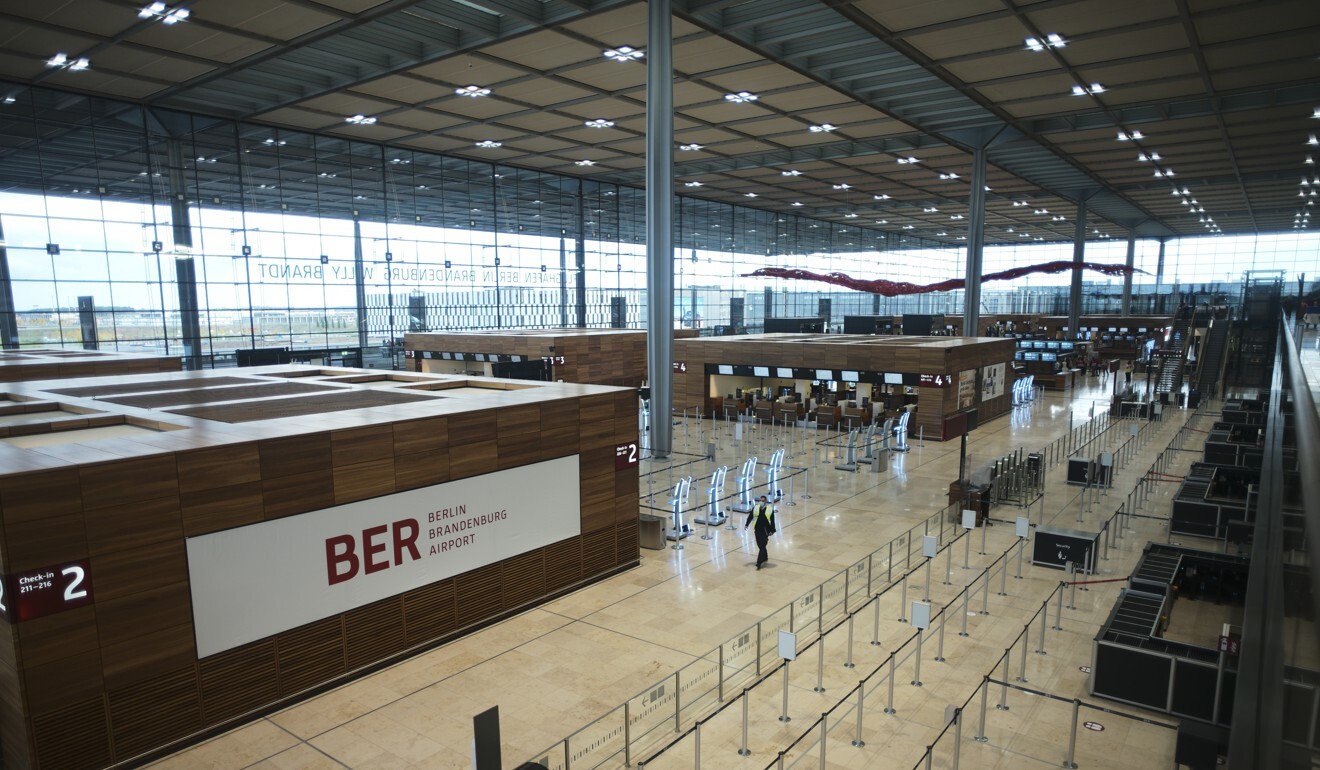
Berlin looks to China, Southeast Asia as it opens new airport nine years late
- Berlin Brandenburg Airport (BER), located southeast of the German capital, was originally due to open in 2011
- Operators need to compete with rival international airports in Frankfurt and Munich
Thirty years after it was first planned and 14 long years after the groundbreaking ceremony in 2006 that marked the start of its troubled construction, Berlin’s new international airport will be unceremoniously opened on Saturday – more than nine years late and nearly triple its original costs.
Instead of cracking open champagne to toast the oft-delayed completion of one of Germany’s biggest-ever infrastructure projects, there will be only quiet sighs of relief when the first two planes – carrying Lufthansa and easyJet executives – land simultaneously on twin runways at the Berlin Brandenburg Airport.
Reflecting a new-found humility after the eight-year nightmare of bungling and delays that had the side effect of badly tarnishing Germany’s once-sterling reputation for engineering efficiency, the deliberately low-key opening will stand in sober contrast to a lavish grand ceremony for 40,000 government leaders and VIP guests planned for a June 2012 opening that had to be scrapped at the last minute – just a month beforehand as the airport’s price tag ballooned three-fold to US$7 billion.
“There were a lot of mistakes made and problems were greatly underestimated,” said Engelbert Luetke Daldrup, the airport’s CEO who took control of construction three years ago and managed to overcome sceptics to finish the airport named after former West German chancellor and West Berlin mayor Willy Brandt. Four hapless predecessors were fired or quit before he arrived.
The important cities in China need to be connected to Berlin
“We’re not going to have any opening celebration. We’re simply going to open. Obviously we’re all a bit euphoric now that we’re about to open after so many years of hard work,” Luetke Daldrup said.
The new airport was expected to have a capacity of about 40 million passengers per year – making it instantly one of the 10 largest in Europe.

Luetke Daldrup told South China Morning Post that he was counting on growing numbers of passengers and new direct long-haul routes in particular from China and Southeast Asia to Berlin, Germany’s largest city and Europe’s third most-visited destination after London and Paris.
Perhaps the biggest challenge facing executives of the state-owned Berlin Brandenburg airport, Luetke Daldrup said, will be to convince the German government and governments in Asia as well as North America to expand reciprocal landing rights.
Berlin’s problem is that most of those rights from outside Europe have already been awarded to rival international airports in Frankfurt and Munich – two cities in the west and south of Germany with a combined population that is only about half of Berlin’s 3.5 million in the east.
There are only about three long-haul international flights per day – a fraction of the number of such flights from non-European Union flights to Frankfurt and Munich. Part of that is due to a steep drop in air travel due to the coronavirus crisis but even before that there were only about 10 to 12 international flights per day.

“We’re hopeful that alongside the direct flights to Beijing that we’ll also have flights to Shanghai,” said Luetke Daldrup, adding that would be one of the airport’s main targets in the years ahead. “Hong Kong is also an important market we’re hoping for too. We’d urge both the German and Chinese governments to grant more rights in the course of their landing rights negotiations. We need to see an expansion of the rights even if it means the airlines flying those routes now might face a bit more competition.”
Berlin officials have long lamented the fact that even though more than 35 per cent of international travellers to Germany were headed to Berlin, only about 2 per cent of the long-haul flights from overseas were flying directly to the German capital – with most arriving passengers annoyingly forced to transfer through hubs in Frankfurt, Munich, Zurich, Vienna or Amsterdam.
“I’d consider it inconceivable for the major cities of the biggest economies of Europe and Asia to continue to have so little air traffic between them in the future,” Luetke Daldrup said. “The important cities in China need to be connected to Berlin.”

That the airport itself – which will replace three smaller Cold War-era airports in what was then West and East Berlin – is now about to be connected to the global aviation network is for many Germans a minor miracle in itself.
Even though the planning for a major central Berlin airport began in the heady early days of German unification not long after the Berlin Wall fell in 1989, it ran into wearying waves of problems that were only exacerbated by its own opening being delayed no less than six times from 2007 to 2011, then 2012, to 2013, 2014 and 2017 - the year Luetke Daldrup arrived with yet another unfathomable delay: 2020.
Many Germans, including Lufthansa executives, thought the airport that was initially plagued by an inadequate smoke ventilation system, would never pass the safety inspections required to allow it to open. Other problems quickly emerged such as improperly installed cables, 4,000 doors incorrectly numbered, some escalators that were not long enough, and computer malfunctions that made it impossible to switch off the lights overnight for months on end.

“The construction rules in Germany and Europe are very complicated because security has such a high priority,” said Luetke Daldrup.
He said the floor space had been expanded from 220,000 to 380,000 square metres (4.1 million sq ft) over the last three decades because of the growing popularity of Berlin as a destination. Futhermore, a Terminal 2 was expected to open in 2021.
“The airport is 70 per cent larger than the airport that was planned at the start. These changes weren’t managed professionally enough,” he said.
Some had urged the airport’s executives to simply tear it all down and start from scratch because they didn’t think it could be repaired. The added debt, along with the ravages of the Covid-19 pandemic, will weigh on the airport’s results for many years to come.
“It’s extremely important that we get more landing rights from overseas,” said Patrick Muller, the airport’s chief operating officer. “About 90 per cent of the passengers from abroad who come to Germany ultimately want to come to Berlin. But they can’t get here right now on direct flights because of the landing rights situation.”
Muller said it was not only business leaders from China and Germany who were eager to fly between those two countries but also artists, start-up companies, real estate investors and people from the gaming community were coming to Berlin in large numbers for more than the last decade.
“There is plenty of demand from China and Southeast Asia but the landing rights aren’t there yet,” he added. “Southeast Asia has huge potential for us and we know the demand is there. It’s only a rights’ issue now.”

